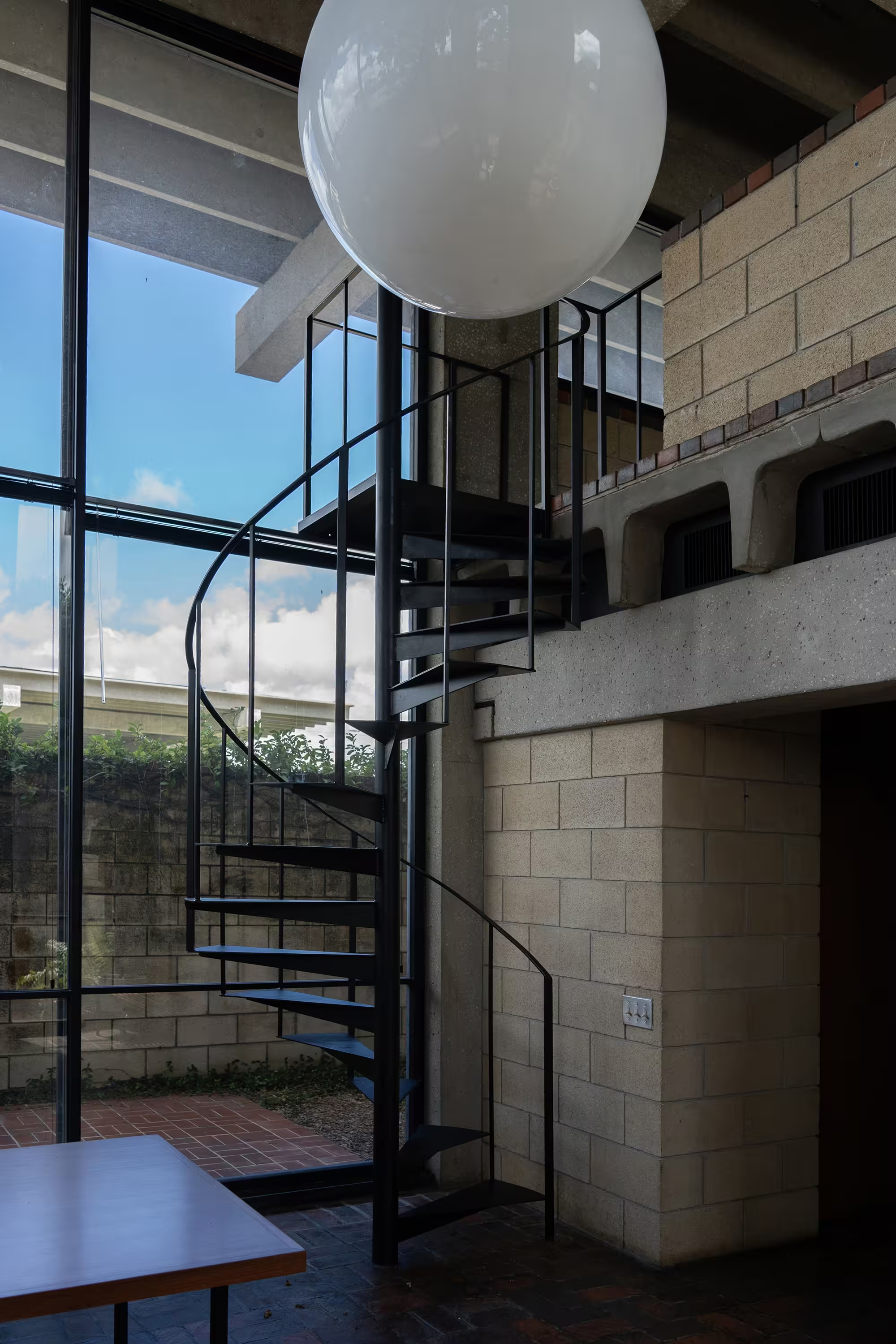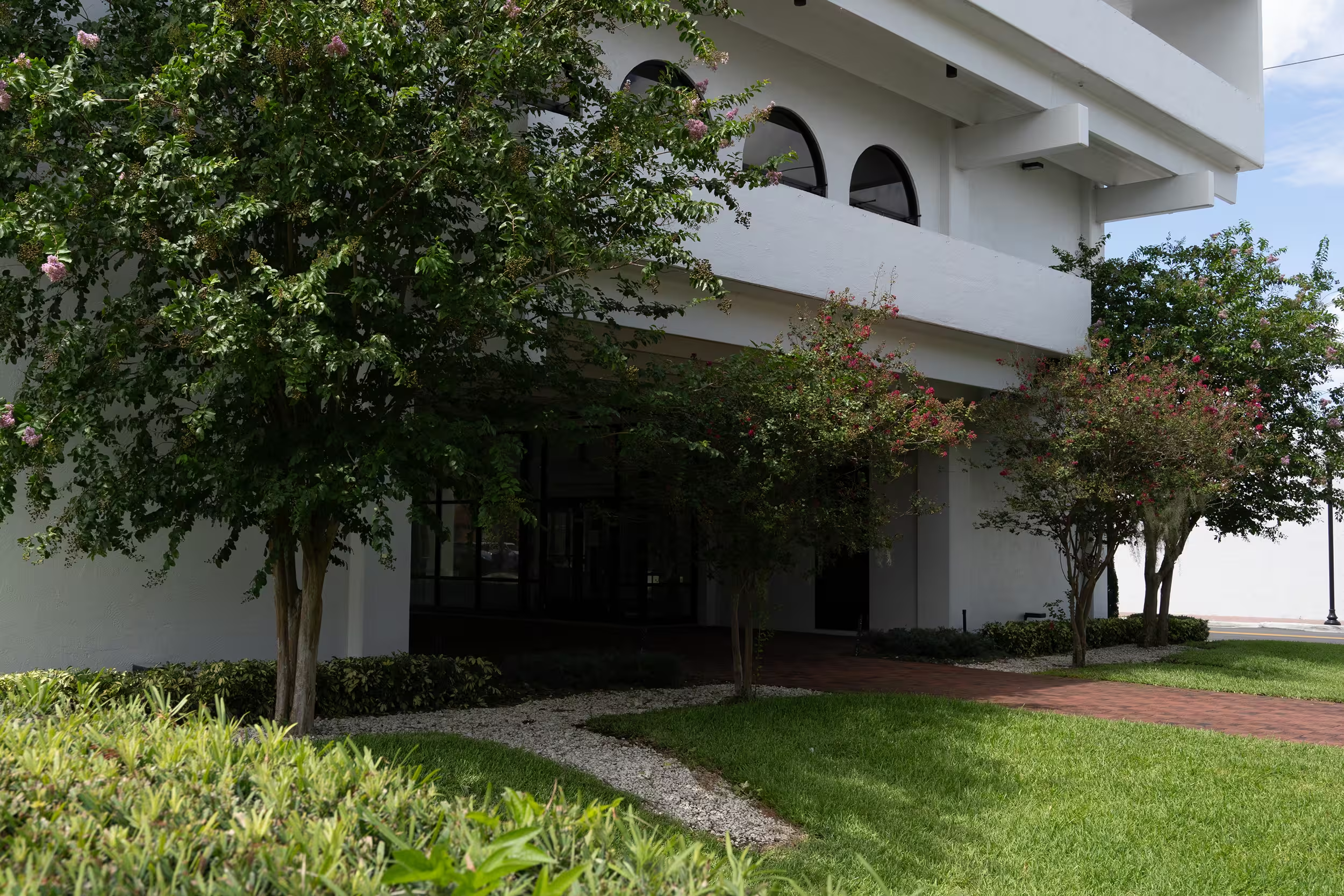July 26, 2025
Gene Leedy's architecture in Winter Haven
We traveled to Winter Haven to see the buildings of Gene Leedy — a pioneer of Florida modernism whose work still resonates today. Gene Leedy helped shape what became known as the Sarasota School of Architecture, leaving a strong imprint on Florida’s mid-century modern landscape.
His work influenced many architects over the years, including Max Strang, who remained a close friend and collaborator. After Leedy's passing, Strang actively worked on restoring the architect's house and office and founded the Doubletee Foundation to preserve and develop his legacy. Representatives of the foundation gave us a tour of Leedy's buildings, sharing stories about his creative journey.

Leedy was one of the key figures of the Sarasota School of Architecture, known for its critical regionalism in modern design. He used innovative methods such as wide roof overhangs, natural ventilation, and strategic building orientation to maximize winter light and minimize summer heat. These solutions, tailored to the local climate, became the foundation for many architectural projects, including his office in Winter Haven, where he first applied prestressed concrete structures, including Double T beams. This groundbreaking solution created open and flexible spaces without needing load-bearing internal walls. The office became one of the first projects where Leedy showcased his methods, which later became widely applied in contemporary architecture.
Leedy recalled that he initially did not plan to use concrete, considering it "unworthy." However, one day a client, the owner of a concrete production company, asked Leedy to incorporate his structures into the project. That experiment was a defining moment — Double T beams would become one of Leedy’s trademarks.

What impressed us most in his work was the raw clarity of materials and structure. Concrete blocks are left bare, the Double T forms exposed, unapologetically revealing how the buildings are put together. This approach resonates with contemporary metamodernism's thinking and makes Leedy's projects relevant even today. In his office in Winter Haven, we were impressed by the bright atrium with large panoramic windows, which fill the space with light and give it a monumental feel.
{gallery:leedy-1}
In the design of the Winter Haven Chamber of Commerce, the site for construction was chosen in the center of the city, on the grounds of a public park, which provoked protests from residents concerned about a possible disruption of the spatial harmony. Leedy suggested keeping the ground level open so the park could continue through the building. This allowed the green space to stay intact and meet the city's conditions. The breezeways — air corridors built into the building — provided natural ventilation and helped avoid excessive dependence on air conditioning, improving energy efficiency.

An essential part of Leedy's approach was the concept of adaptive residential houses. In the Craney Homes project, he developed modular houses that could be expanded. One of these houses, where Leedy lived for many years, was also part of our tour. As interior designers, we were particularly impressed by the coherence of his approach: built-in furniture systems naturally extended the architecture, creating a unified design code that passed through the entire space.
{gallery:leedy-2}
Leedy's approach to materials and attention to climatic conditions inspires us to apply similar principles in our work. We strive to maintain the "honesty" of materials, emphasizing their natural properties, and develop a unified element base that connects the interior and architecture into a single whole.